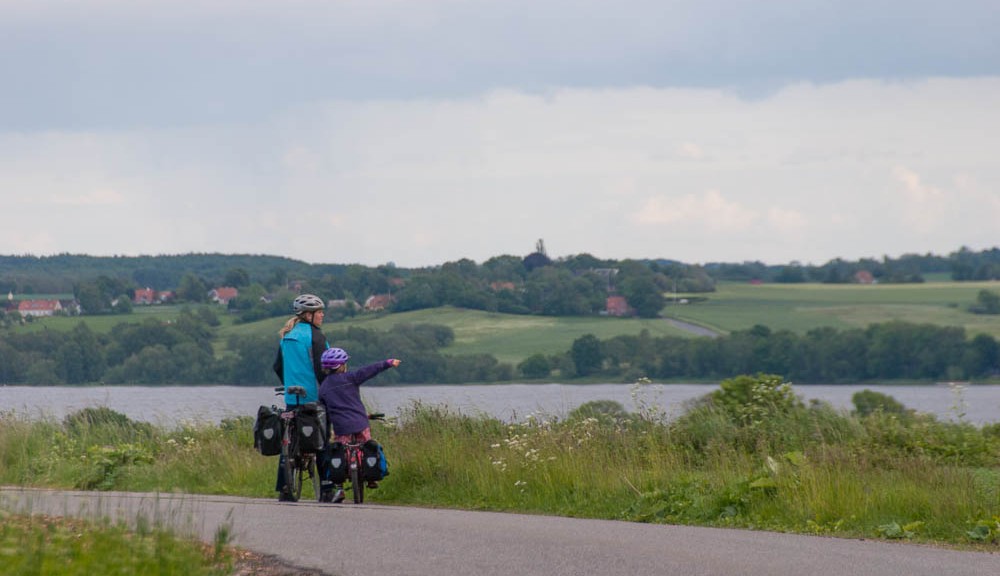When going on a tour, it is advisable to test-drive your gear (and co-riders), allowing you to make realistic plans for your great tour, and dismiss useless gear and stress test equipment. A short weekend trip can be nice and allow you to see new places too.
First, your test-drive should be short and within reach of normal civilization. No fun in trying your gear to hard, and maroon in the middle of nowhere.
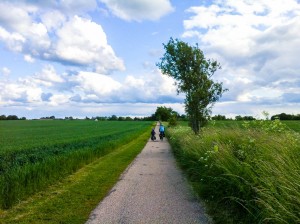
Secondly. The lighter you travel, the easier it is to move.
Before going summer touring on Bornholm with the family we decided to test the bikes, panniers, and the youngest member of the family. How far could she manage to ride with weight in the panniers?

From Copenhagen, we took the regional train to Sorø, where we had planned a short trip around the twin-lakes, Tystrup-Bavlelse Søer. The full round-trip around the lake back to Sorø would be 38 km, but also having the option of a short cut to approximately 25 km going to the train station in Glumsø.
Starting in the early afternoon, we planned to stay the night at a hostel, not so far from Sorø, the Kongskilde Friluftsgaard.
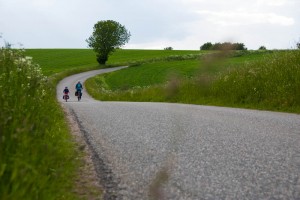
The tour is not a dense collection of highlights, but rather a nice slice of the diversity of beautiful country side. The landscape is dominated by the many small hills and small villages that dot the landscape.
On the first leg, from Sorø station and south, through the countryside, and avoiding the bigger roads, we passed the only wild growing forest in Denmark, Suserup Skov. It is the last remains of the forests that covered Mid-Zealand after the ice age 20000 years ago. Today, it is privately owned by the Sorø Akademi, and has been left to its natural order for experimental reasons since 1920. You are only allowed to walk on the paths, but it is beautiful, and a rare sight in Denmark.
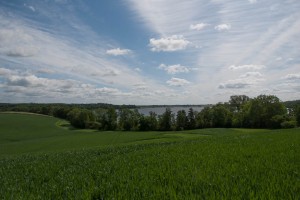
The hostel is placed almost directly at the intersection of the National Cycle Route 6 and 7, and is a great starting point for exploring the area around the twin lakes, since it also doubles as a information centre for local nature and food. Since it is fairly large it is also quite popular with weddings and parties.
Continuing the round trip next day, we became aware that Copenhagen is actually quite close, when meeting the hordes of cyclists on carbon racing bikes on their sunday morning exercise.
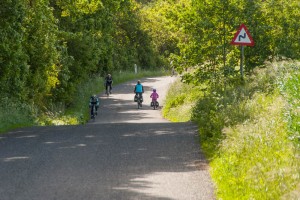
The gentle hills and curvy rural roads make for perfect road racing. Actually, Copenhagen is not further away, than many road racers from Copenhagen include the twin lakes in their training circuits.
As we left the National Cycle Route 7, we realized that the roads we’re not as suitable for cyclists as the roads designated for the cycle route, and decided to go to the nearest station, and take the train back to Copenhagen.
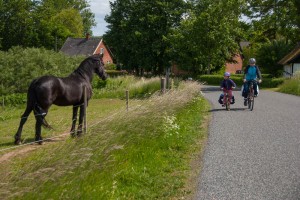
A full circuit would be no fun on the big roads, and – more important – the trains on the main line would be inaccessible for cycles at the time we arrived at the station, so we opted for the smaller line, and returned home.
